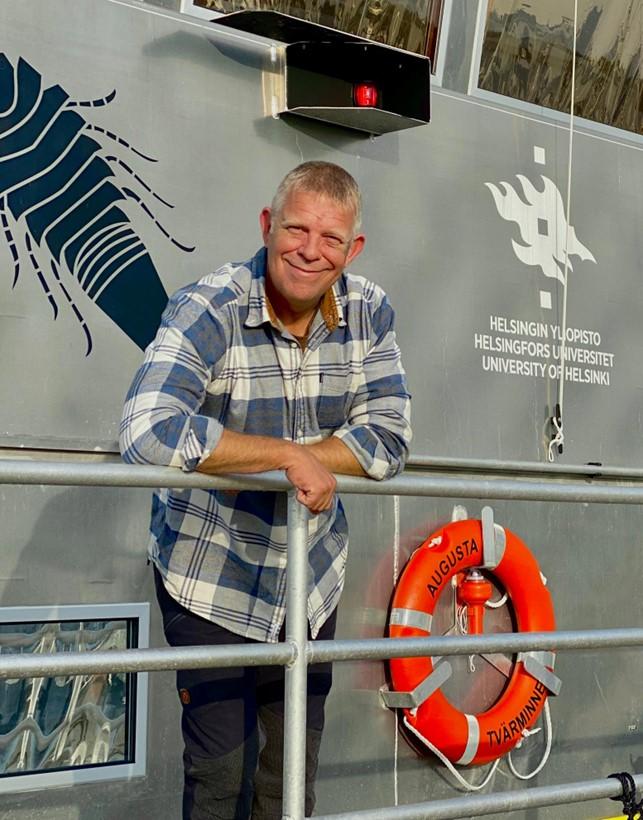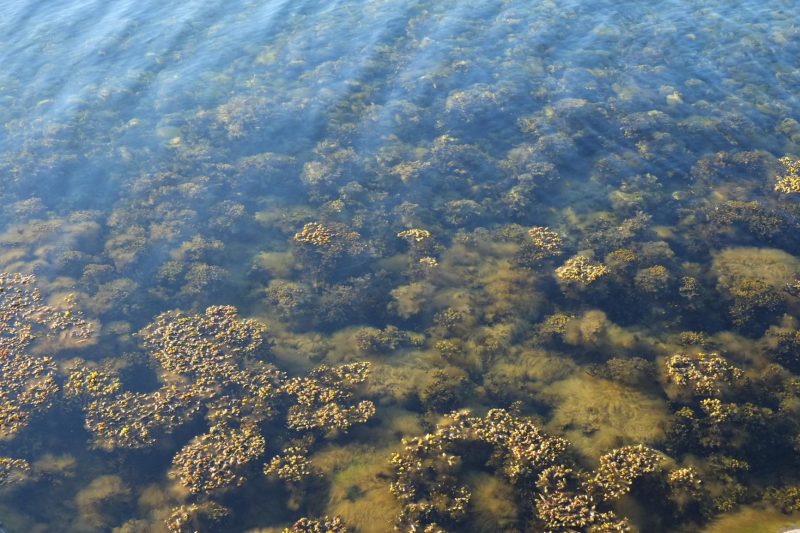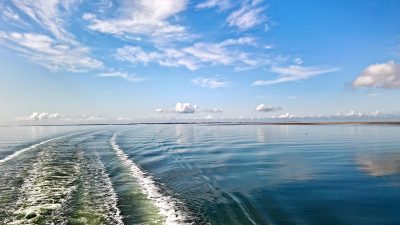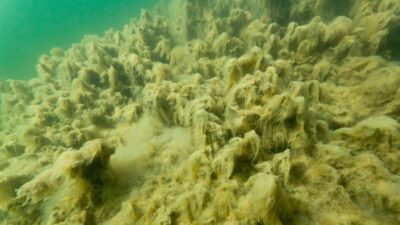Baltic Sea greetings from Alf Norkko, the Baltic Sea professor
Author
Kirsi Kurki-Miettinen
Alf Norkko is a renowned marine researcher and Baltic Sea professor. He will now share with us how he ended up researching the seas, and bring us up to date on the Baltic Sea.
The journeys of a professor took him from the seas of the world to the shores of the Baltic Sea
As a young man, Alf Norkko felt a little lost, as do many people at that age. It was hard to pinpoint a particular field of interest. Chance intervened, and Norkko wound up at the university, studying biology. Trainee periods at a biological station and the Indian Ocean sparked a fire that has been burning until today: his passion for marine biology. The young, enthusiastic Ph.D. joined top research teams all the way in New Zealand and Antarctica, studying the impact climate change has on biodiversity and coastal habitats.
Nevertheless, he always felt the calling of the north and the Baltic Sea. The research conducted in the oceans had taught him a lot, and research questions were formulated in a similar manner, even though the problems faced by the seas were different. To be able to assess the speed of the change, it is important to do the groundwork in change monitoring. Changes in both Antarctica and the Baltic Sea have been extremely fast.

The most serious problems faced by the Baltic Sea impact organisms and ecosystems
For around ten years now, Norkko has been the scientific lead of the Tvärminne Zoological Station. According to Norkko, the sea in front of the research station is now doing better, partial recovery from eutrophication can be witnessed, and the area features some magnificent underwater nature. Location is a key factor for the clarity of water areas. The water in front of Hanko, for example, gets mixed more efficiently than the water in the Archipelago Sea. ”In terms of water turnover, the Baltic Sea is a bit like a poorly flushing toilet, which is why the problems accumulate in certain regions”, explains Norkko.

The severe problems of the Baltic Sea, i.e. eutrophication and climate change, are punishing to the sensitive ecosystems whose status is poor to begin with. It is as if the Baltic Sea were a member of a risk group: it already has many problems and ailments to tackle, and a new disease or symptom, such as rising temperatures, will weaken it further. The Tvärminne station has measured the temperature of the Sea already from the 1920s, or almost one hundred years. From the results, we can see that the rise in water temperature has accelerated, heat waves come more often, and they last longer. We can conclude that climate change makes the Baltic Sea’s other problems worse. In addition to rising temperatures, rainfall in mild winters brings more nutrients to coastal waters, making eutrophication even worse.
Important habitats in the throes of change
For many organisms and for the wellbeing of the Baltic Sea, important key species, such as bladderwrack, blue mussel, and common eelgrass, have been especially hit by the long-term temperature rise in shallow coastal waters. Unfortunately, the organisms in the shallow seabeds are not really monitored, so we do not know what is the combined impact of the various problems to the status of the ecosystem.
In addition to nutrients and temperature, ecosystems are impacted by the carbon cycle. As temperatures rise, production grows; this is known by every home gardener. As an example, Norkko highlights the familiar method of composting. If there is an excess of organic matter, but no organisms and plants – in the case of composting, earthworms – that would utilize the matter, the organic matter will accumulate, and, when decomposing, create methane, which is a greenhouse gas much stronger than carbon dioxide. This is how rising water temperatures accelerate climate change.
Cross-border research introduces new information on the Baltic Sea
Tvärminne is also the founder of CoastClim, a multi-disciplinary and international Centre for Coastal Ecosystem and Climate Research. CoastClim brings together researchers from various fields, allowing us to build a better view of all the factors that impact the Baltic Sea. In addition to traditional marine research, the project studies the atmosphere, nutrient cycles, the carbon cycle, and carbon sinks.
As climate change advances, it is increasingly important to understand where carbon is, in which form it is cycled, and how it impacts the ecosystems. We have, for example, noted that ecosystems that are off balance may release methane, in the case of coastal ecosystems all the way to the atmosphere, which obviously accelerates climate change even further. Carbon sinks in forests have been widely discussed, but would it be time now to turn our eyes underwater? The carbon cycles of large sections of Finnish coastline are still unfamiliar to us. The Sea has potential to be both a carbon sink and a carbon source, which is why it is important to study it further.

We need a wide selection of solutions to save the Baltic Sea
The Baltic Sea is saved by tackling, in particular, its severest problem, i.e. eutrophication. Naturally, climate change must be curbed also because of global problems, but locally, the Baltic Sea will benefit most from reductions in its nutrient load. In particular, discharges from non-point sources such as agriculture and forestry should be tackled with an array of different methods. In addition to methods with an immediate impact, such as gypsum treatment, we need change throughout society. Our agricultural policies should be changed to include biodiversity, so that farming could be more diverse, and take carbon cycles into account.
The role of forests must also not be underestimated: carbon, as well as nutrients, enters the waterways with runoff from drained forests. Finland is a country with exceptionally many drained areas, so we need to take action. Luckily, the same methods used by for example the John Nurminen Foundation’s VALVE project reduce the runoff of both nutrients and dissolved carbon.
Summer brings blue-green algal blooms and Baltic Sea celebrations
All friends of the Baltic Sea are of course interested in what the summer ahead looks like. Will there be blue-green algal blooms? Or will we be splashing about in clear waters? Unfortunately, professor Norkko does not have good news to tell us. If the summer is warm and not windy, we will see a lot of algal blooms. Nutrients in the Baltic Sea are in fact plentiful, and this boosts blue-green algae growth.
Fortunately, there are also causes for celebration! The Tvärminne Zoological Station has its 120th anniversary, and in honour of the event, you can learn more about the magnificence of underwater nature all through the summer. In addition to the summer events, early in the autumn, on 3rd September, you can learn more about marine research, as the Tvärminne research station opens its doors to the public.
In this year of festivities, the eyes of the Tvärminne station and professor Norkko look firmly to the future: we hope to see a cleaner and healthier Baltic Sea ahead!


